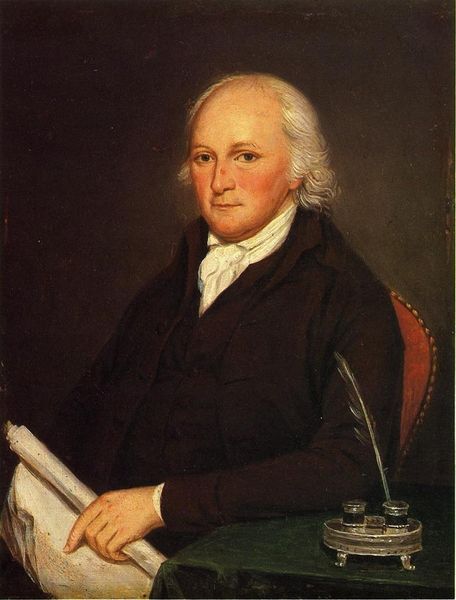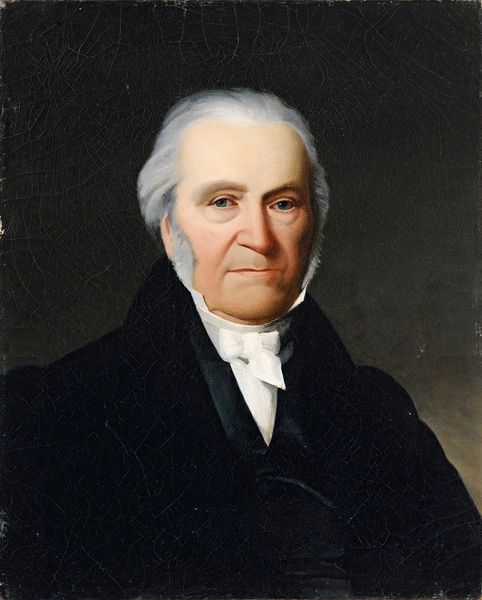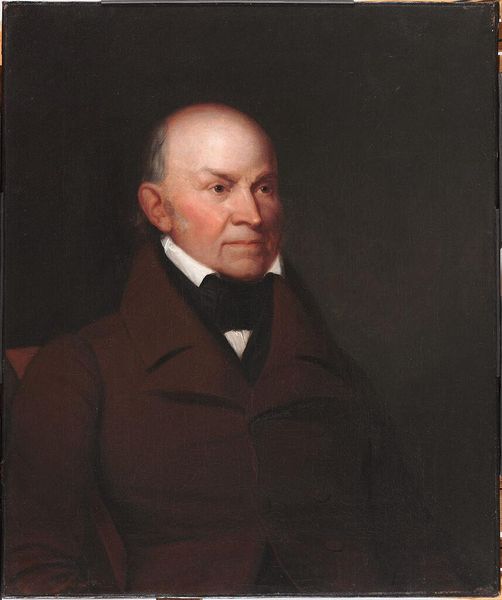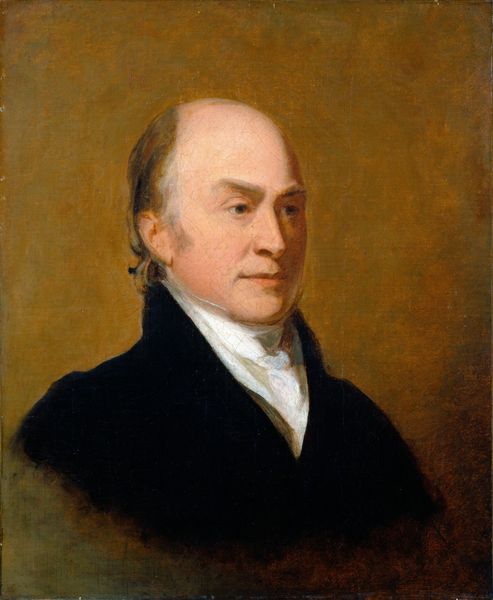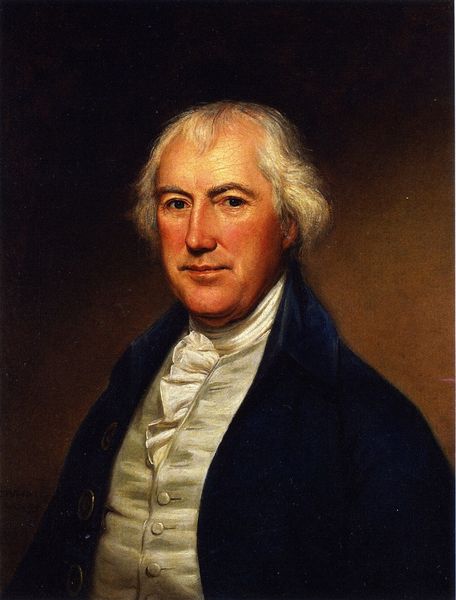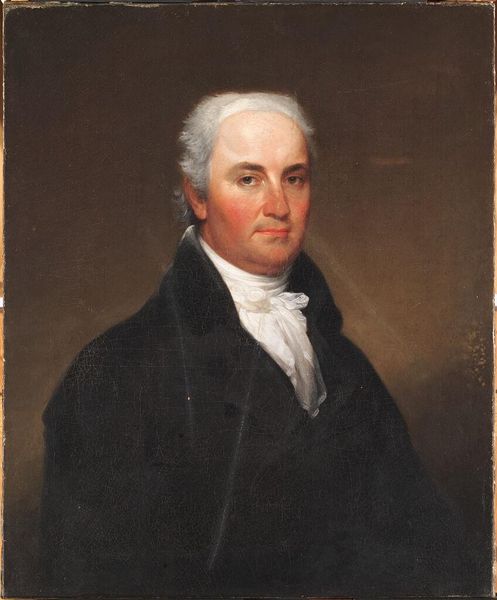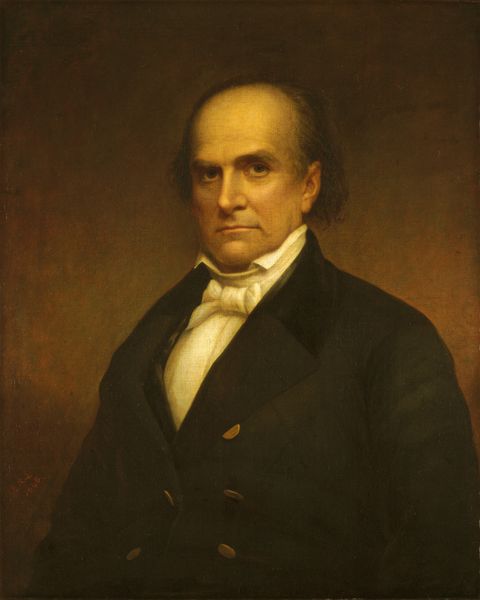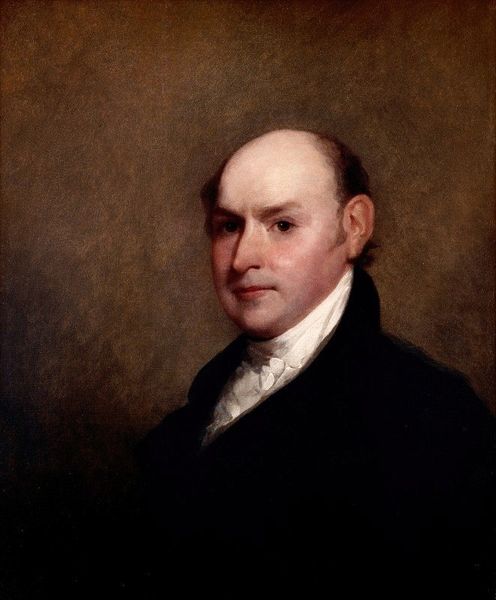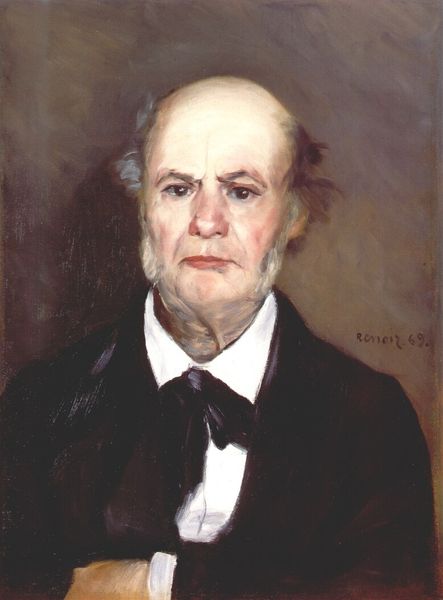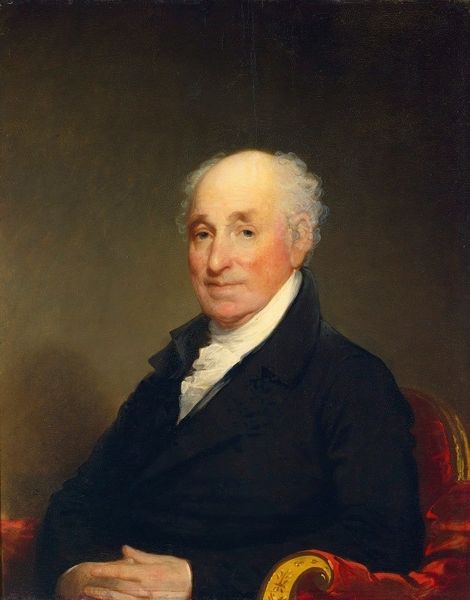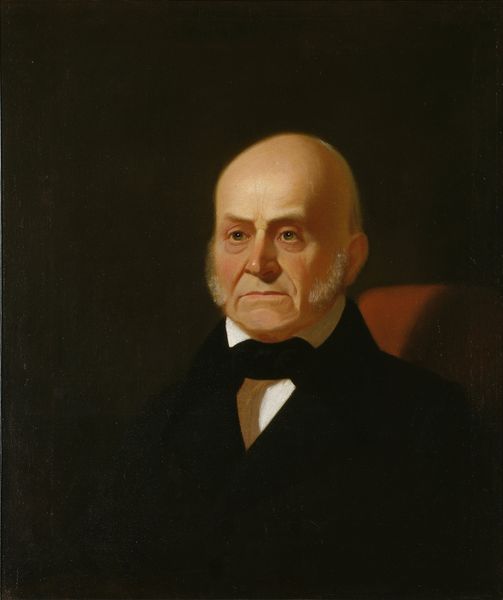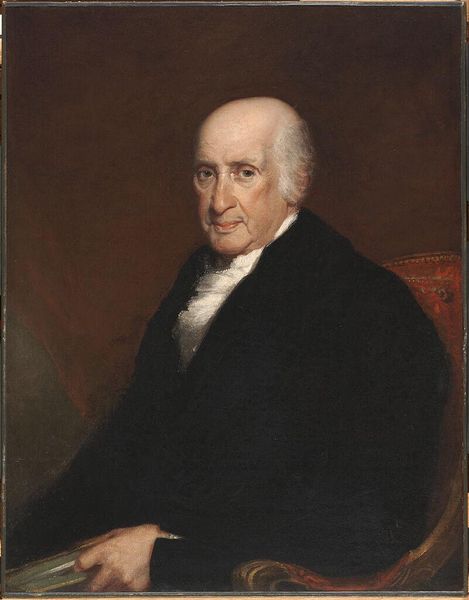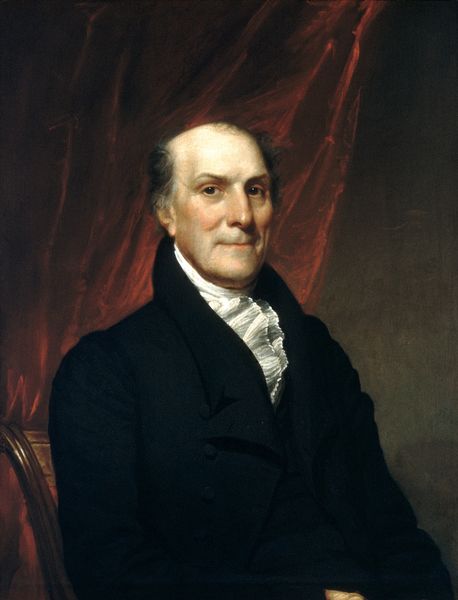
painting, oil-paint
#
portrait
#
neoclacissism
#
self-portrait
#
painting
#
oil-paint
#
history-painting
#
academic-art
#
realism
Copyright: Public domain
Charles Willson Peale rendered this self-portrait in oil on canvas, presenting himself not merely as an artist but as an enlightened citizen of the early republic. Peale's composition draws us in with the direct gaze and the gentle asymmetry of the artist’s posture. The muted palette, dominated by blacks and subdued reds, focuses our attention on the face, illuminated with subtle gradations of light and shadow, thus capturing a sense of the sitter’s character. The perspective leads our eyes to the museum gallery, filled with curiosities, a deliberate construction that blurs the lines between artist, intellectual, and curator. Consider how this presentation destabilizes conventional categories of portraiture, inviting us to reflect on the relationship between art, knowledge, and self-representation in a rapidly changing world. The painting itself, a careful arrangement of form and content, encourages a deep consideration of what it meant to be an artist in a new nation, as well as a signifier of cultural and philosophical discourse.
Comments
No comments
Be the first to comment and join the conversation on the ultimate creative platform.
